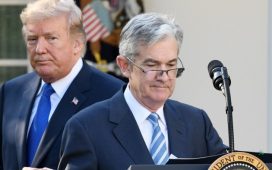Receive free US banks updates
We’ll send you a myFT Daily Digest email rounding up the latest US banks news every morning.
Chief executives do not tend to sound warnings when their business is growing. But JPMorgan chief executive Jamie Dimon was right to draw attention to credit cards this summer. “We’ve been over-earning in credit for a substantial amount of time now”, he told investors. “We’re quite conscious about it.”
Debt is rising. But over the past couple of years, American consumers flush with pandemic stimulus cash have had little difficulty making payments. Credit card delinquencies and charge-offs were abnormally low in the second quarter of the year. This meant that banks such as JPMorgan did not have to set aside the sort of loss reserves that can sting earnings.

Now the credit cycle is returning to normal. In August, the Federal Reserve Bank of New York’s annual report on the finances of American households showed that US credit card balances breached $1tn for the first time in the second quarter of the year. That is 16 per cent higher than last year. It exceeds growth in auto and student debt as well as mortgages.

Equally as important, the New York Fed declared that delinquencies — balances more than 30 days late — had jumped back to 2019 levels. Among those with the lowest credit scores, delinquency rates have doubled since the 2021 low point.
For banks, the over-earning that Dimon noted may have already begun to moderate. Rival Bank of America’s credit card delinquency rate of 2.6 per cent is just 40 basis points below 2019 levels.

The question is how softly the US economy can land. According to research from the San Francisco Fed, total “excess savings” for US households peaked at $2.1tn in mid-2021. By March 2023, much of that had gone. Researchers estimated that $500bn remained. There is some hope that this can prevent a sudden cut in spending.
Even with this buffer, however, consumers face elevated prices and higher debt servicing costs. Forbearance policies for student loans are at an end. For those carrying credit card balances, the average rate of interest now exceeds 20 per cent, up from mid-teens prior to the pandemic. Elevated carrying costs will soon eat into savings.
Our popular newsletter for premium subscribers is published twice weekly. On Wednesday we analyse a hot topic from a world financial centre. On Friday we dissect the week’s big themes. Please sign up here.









